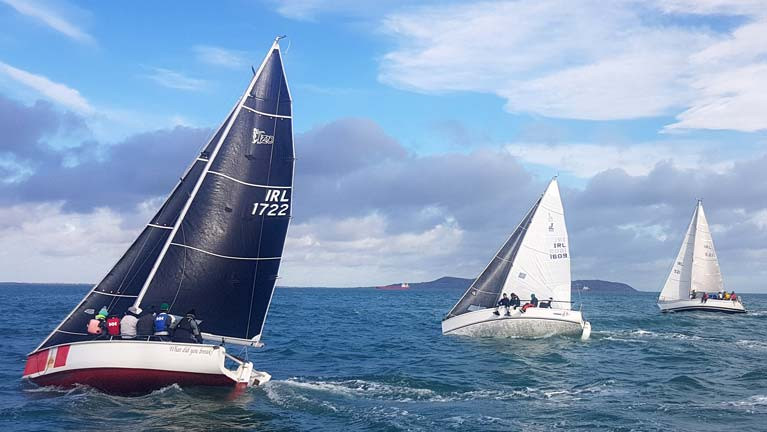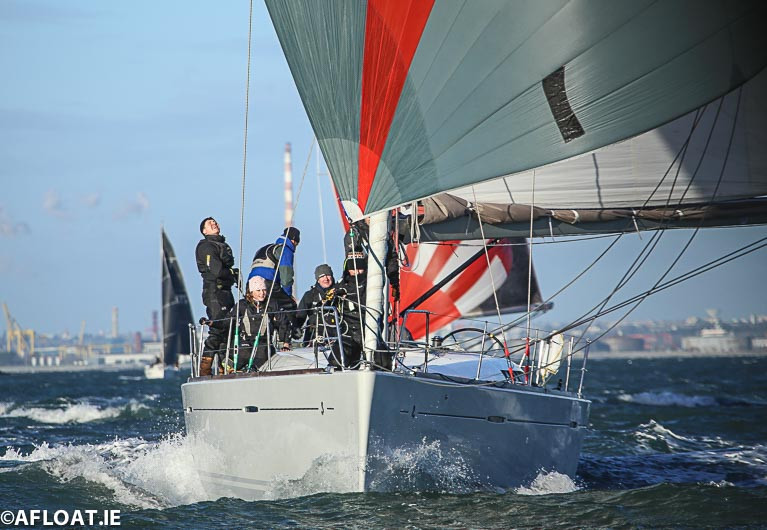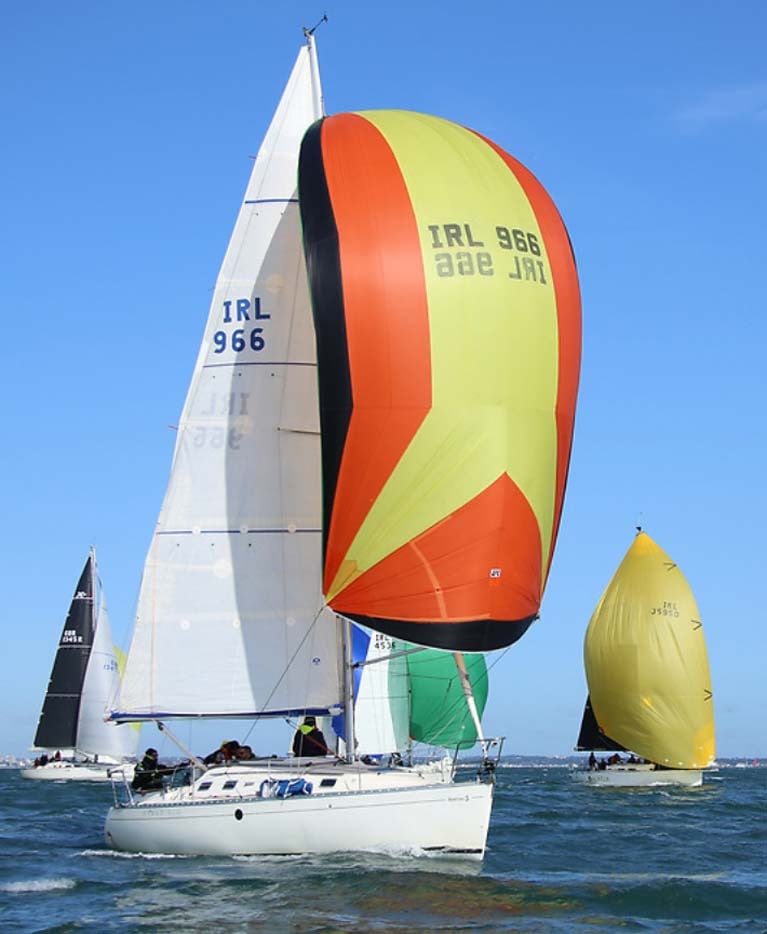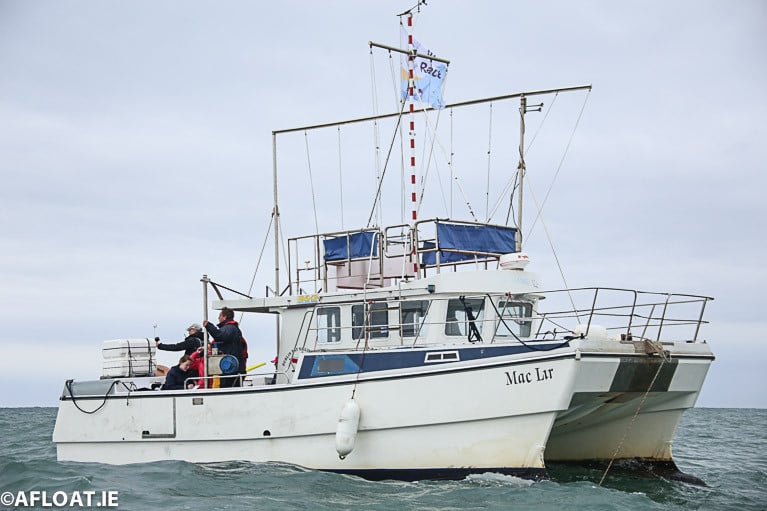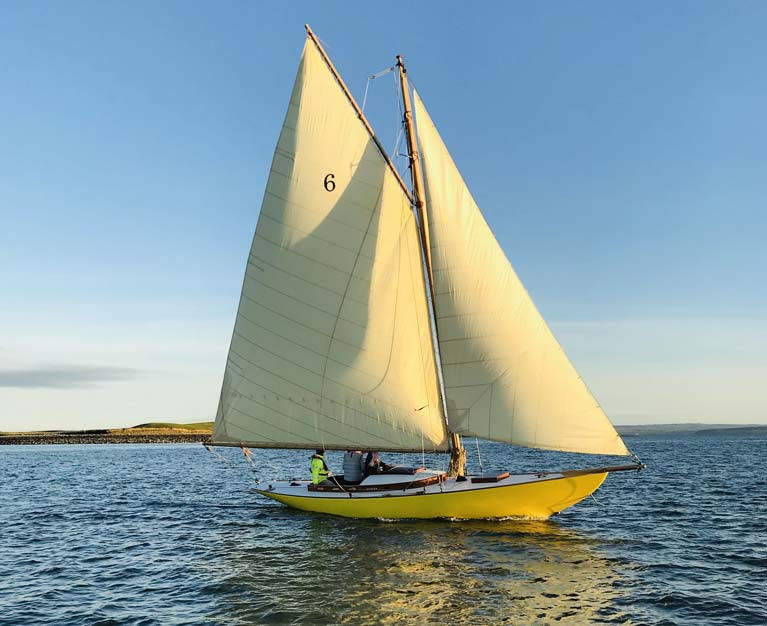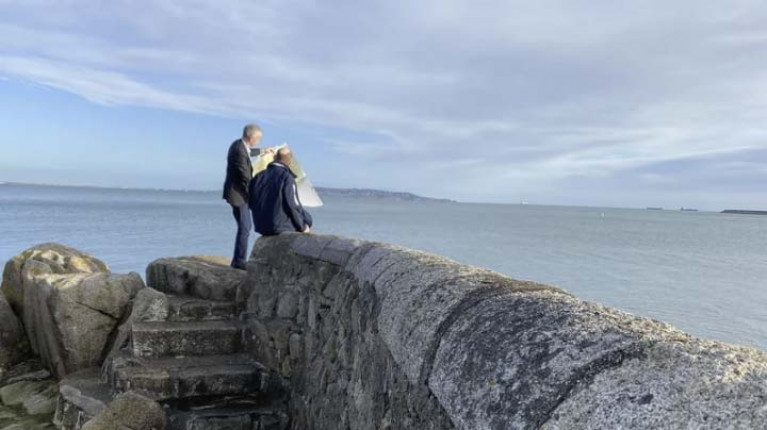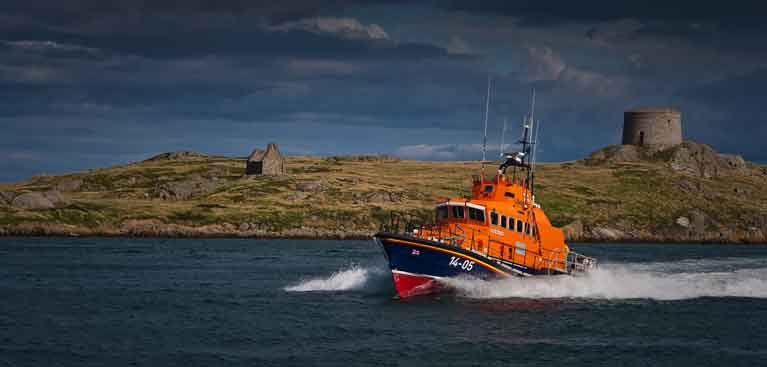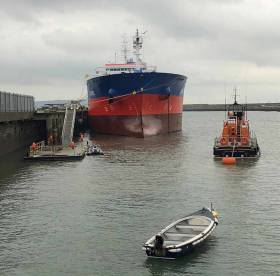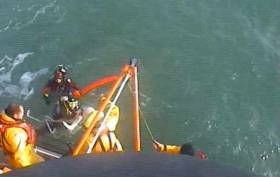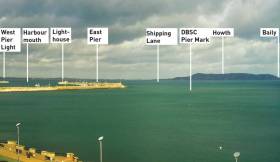Displaying items by tag: Dublin Bay
After four races sailed of the DBSC Spring Chicken Series, the 1720 sportsboat Ricochet leads overall with one race of the series left to sail on March 22nd.
Second overall in the Citroen South sponsored fixture is the Sigma 38 State O'Chassis with third place overall taken by the J109 Dear Prudence.
As Afloat reported earlier, the fourth race on Sunday morning featured a southerly downwind course to Dalkey from Dublin Bay.
Download overall results below.
Overall leader Mermaid IV will be in the first start of next Sunday's forecasted breeze fourth race of the DBSC Spring Chicken Series on Dublin Bay.
As Afloat reported, the Beneteau 50-footer has a slender lead in the weather hit series that concludes on March 22.
Download latest starts and handicaps below.
First 310 'More Mischief' Leads DBSC Spring Chicken Series
The Beneteau First 310 More Mischief leads the DBSC Spring Chicken Series by a single point after two races sailed.
The 1720 Ricochet and the J109 Ruth are in joint second place on 13 points overall.
Download overall results below.
Racing resumed on Sunday morning in great breeze and sunshine after a fortnight of gales on Dublin Bay led to two weeks of cancellations the first time the series has lost two races in a row in 19 years of Spring Chicken racing. As a result, an extra race on 22nd March has been added to the Citroen South sponsored schedule.
Despite the strong winds that scrubbed this afternoon's DMYC Dinghy Frostbites Series at Dun Laoghaire, up to 20 hardy cruiser-racers from a total entry of 47 braved the strong north westerlies on Dublin Bay this morning for the first race of the DBSC Citroen Spring Chicken Series for cruisers.
Race organisers picked a sheltered spot in the western bay area at Seapoint to complete the first of the six-race series in winds gusting to over 20-knots. Results to follow.
Gale force winds are predicted for the Irish Sea later today.
See live Dublin Bay webcam here.
Restored Dublin Bay 21s Will Start DBSC Racing in April
There has been excellent progress on the revival of the Dublin Bay Sailing Club Twenty One project the world’s oldest intact on design keelboat class as they prepare for a new season racing again on Dublin Bay.
Chris Moore of Dublin Bay Sailing Club has confirmed the original DBSC class has been granted a racing start for 2020 Tuesday evening racing starting this April.
Initially, two twenty ones will race then three as the boat building project based in Kilrush on the Shannon Estuary completes the six-boat project.
The restored boats will be welcomed back to the bay in a special DBSC gun salute from committee boat Mac Lir at the start of the season.
Back to the Future
You can join the '21 project leaders Hal Sisk and Fionán de Barra for a sailing talk and a two-course dinner on Thursday the 13th of February in the RStGYC Dining Room in Dun Laoghaire. The talk, “Back to the Future, the Revival of the DBSC Twenty Ones—the World’s Oldest Cruiser Racer Class" will be a visual presentation on the revival plans.
Dublin Bay Water Treatment Not Fit For Purpose, Says Green Party
Water treatment in the capital is not fit for purpose, says the Green Party as it calls for action to improve water quality in Dublin Bay.
The party’s Dun Laoghaire General Election candidate Ossian Smyth told RTÉ News that existing development levies should fund badly needed improvements to the city’s water infrastructure.
Green Party MEP Ciarán Cuffe added that was not acceptable for large parts of Dublin Bay to be unavailable to bathers in the summer months.
It comes after a series of bathing spot closures around the bay last summer — though some of these were prompted by algal blooms not directly related to the release of wastewater.
RTÉ News has more on the story HERE.
Dun Laoghaire RNLI Christmas Eve Ceremony Remembers Lost Lifeboat Crew
At noon this Christmas Eve at the end of the East Pier in Dun Laoghaire on Dublin Bay, RNLI volunteer lifeboat crew will gather to lay wreaths at sea and remember 15 of their predecessors who were lost while on service in gale force conditions to the SS Palme that had run aground off Blackrock in 1895.
The annual ceremony also remembers all those who were lost around our coasts, rivers and inland waters in 2019. Included in this will be lifeboat volunteer Leigh Early from Arranmore RNLI in Donegal who died last month and the three crewmembers of the French SNSM lifeboat service who lost their lives while on service in June.
The ceremony takes place each Christmas Eve in all weathers and lifeboat crew are joined by members of the Dun Laoghaire Coast Guard and Civil Defence who form an honour guard. Both Dun Laoghaire RNLI’s inshore and all-weather lifeboats will launch, and the crew will lay wreaths off the east pier in view of the public.
"The whole of her crew, 15 in number, drowned"
On 24 December 1895 the 'Civil Service No. 1' Dun Laoghaire lifeboat was wrecked while proceeding to the assistance of the SS Palme of Finland. The whole of her crew, 15 in number, drowned. The lifeboat capsized 600 yards from the distressed vessel and, although every effort was made to send help to the lifeboat and to the Palme, nothing could be done.
The second Dun Laoghaire lifeboat 'Hannah Pickard' also launched but it too capsized under sail, fortunately, all crew returned safely. The Captain, his wife, child and 17 crew were eventually rescued on the 26 December by the SS Tearaght.
The short ceremony takes place under the lighthouse at the end of the East Pier. It includes an ecumenical blessing, a reading from a news article published at the time and music.
Commenting on the event Dun Laoghaire RNLI Lifeboat Operations Manager Stephen Wynne said: ‘The loss of 15 lifeboat volunteers devastated the local community but the RNLI here kept going. Volunteer lifeboat crew came forward then, as they still do, to help those in trouble at sea and on inland waters. We hold this ceremony to honour their memory and pay tribute to them but also to remember all those lost to drowning in our waters.’
‘Our lifeboat crew is on call this Christmas as they are every day of the year and we hope everyone has a safe and peaceful time. People are very welcome to come and join us at the end of the East Pier, it’s our Christmas tradition and one that is very dear to us.’
Tanker Bunkers at Dun Laoghaire Harbour
Commercial shipping traffic might be reduced to very little in Dun Laoghaire Harbour these days but it is not gone entirely as witnessed by the arrival of a tanker this weekend.
The 'Kowie' discharged in Dublin Port on Friday night but the city port did not have a berth available for the ship to bunker but was facilitated on the Carlisle Pier at Dun Laoghaire.
Perhaps such overflow may be a regular sight at the South Dublin Harbour with Brexit around the corner?
Dun Laoghaire RNLI Rescue Two Divers on Dublin Bay (Video)
Two scuba divers were rescued on Dublin Bay this afternoon by Dun Laoghaire RNLI after the pair became separated from their boat.
The incident occurred shortly before 3 pm when the divemaster on the surface reported the overdue divers to the Irish Coast Guard.
Dun Laoghaire RNLI All-Weather lifeboat was requested to launch immediately along with the Irish Coast Guard Rescue 116 helicopter based at Dublin Airport. The Dublin Port Pilot boat also responded to the ‘Pan-Pan’ alert and joined in the search close to Dalkey Island. The Dun Laoghaire RNLI Inshore lifeboat was also preparing to launch.
The RNLI All-Weather lifeboat located the casualties south-east of the Muglins Rock fifteen minutes after launching. The two divers had drifted approximately three-quarters of a nautical mile from their dive site. Conditions on scene included a difficult swell left-over from the tide flowing against a fresh northerly wind.
Both casualties were taken on board the lifeboat and taken back to Dun Laoghaire to a waiting HSE ambulance for precautionary checks. Both had been in the water for more than one hour when rescued.
‘This is the outcome that we always hope for and comes from co-operation and training between all the agencies involved,’ commented Stephen Wynne, Lifeboat Operations Manager at Dun Laoghaire RNLI. ‘The casualties remained calm, followed procedure and linked together to ensure they could be spotted.’
Dublin Bay & Dun Laoghaire Harbour Webcam Livestream
This live stream (below) looks northwards from the Scotsman's Bay shoreline at Sandycove out into Dublin Bay.
Left of screen is Dun Laoghaire's West Pier lighthouse, the harbour mouth and the back of the East Pier itself, showing the town bandstand, the Boyd monument and the lighthouse at the pierhead.
The east bight of the main harbour area is also visible showing yachts on moorings.
Also pictured is the Dublin Port Shipping Lane and in the background is Howth Peninsula and its Baily Lighthouse to the right of screen.
In the midground and only barely visible are Dublin Bay Sailing Club's Pier and Bay Racing Marks.
In the foreground is the Newtownsmith Promenade and its rocky shoreline at low water.
You can compare the live stream webcam pictures (above) with the local weather and sea condition tweets in real-time coming from the Irish Lights Dublin Bay Buoy (below)


























